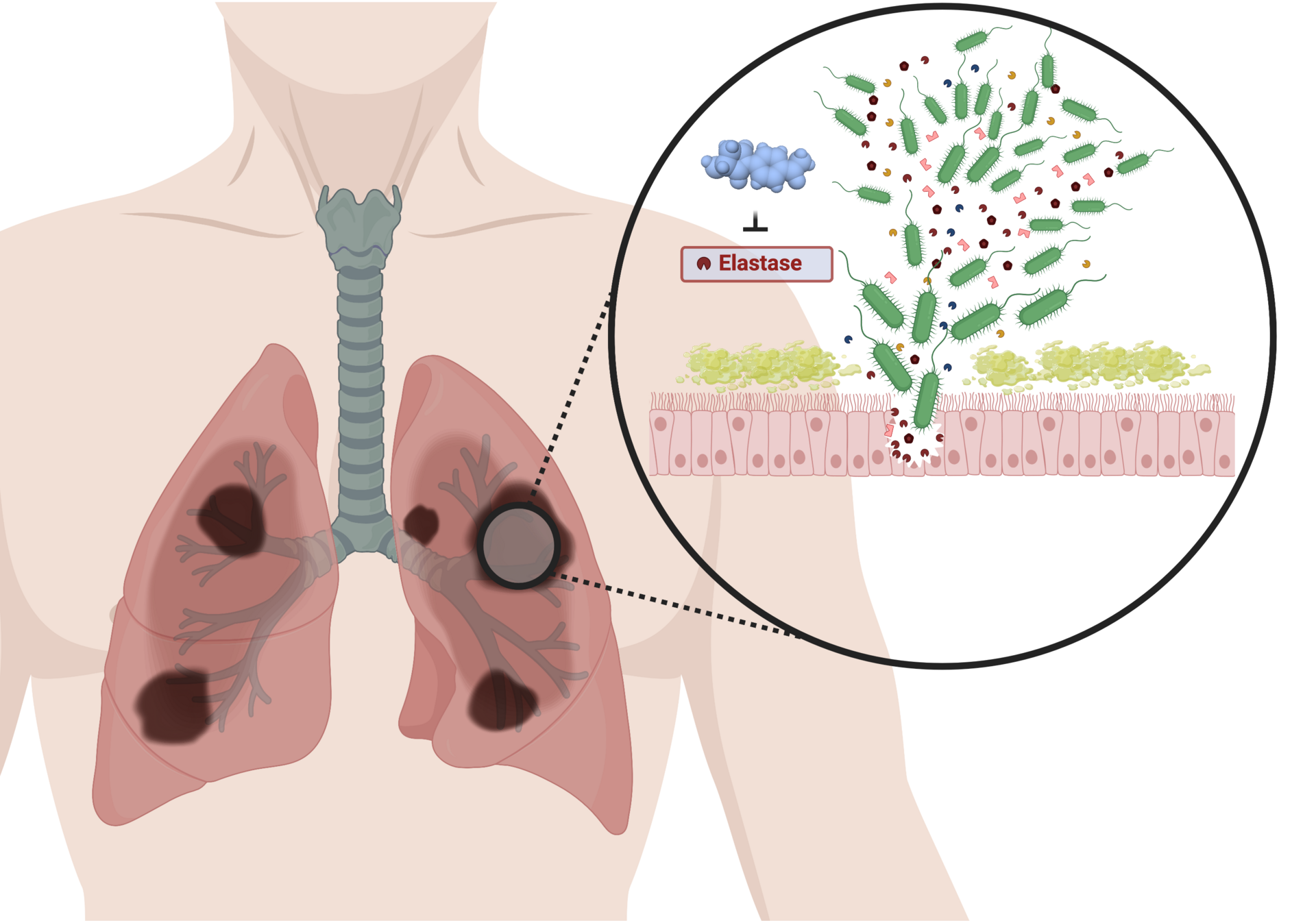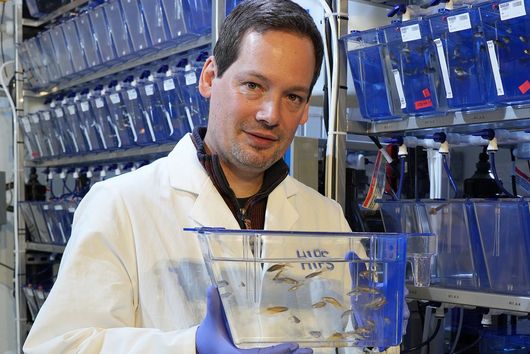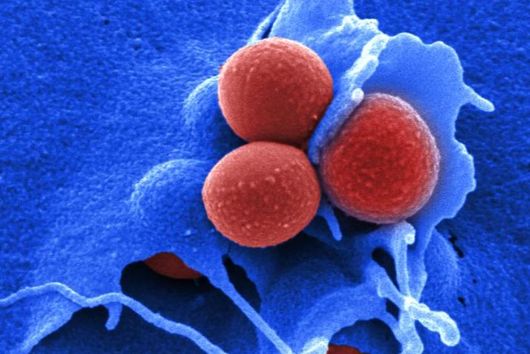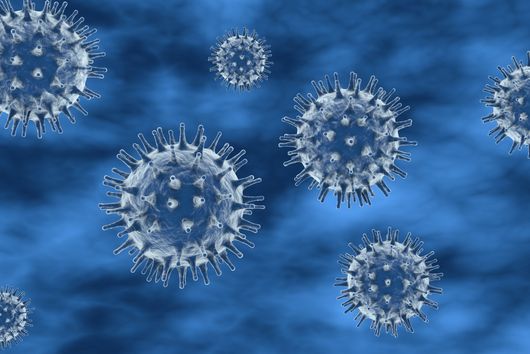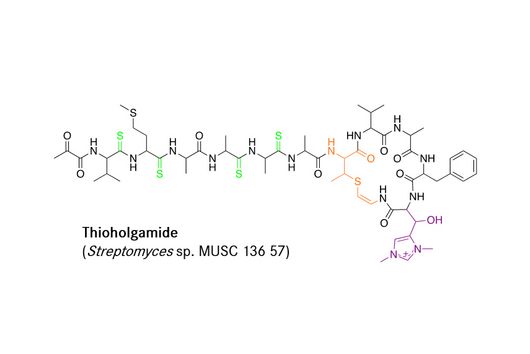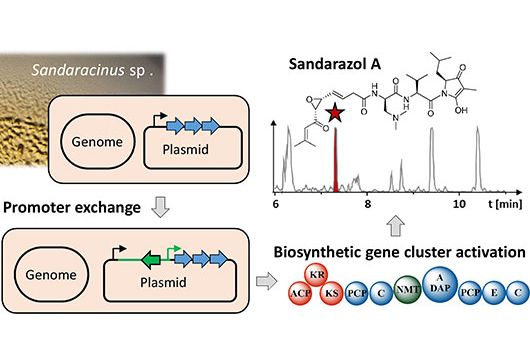Saarbrücken, 01 December 2020 - Its metabolism and the structure of its cellular membrane render the hospital germ Pseudomonas aeruginosa resistant against several antibiotics. P. aeruginosa is responsible for around ten percent of all hospital infections, making it one of the most common multi-resistant germs. The Helmholtz Institute for Pharmaceutical Research Saarland (HIPS) now made an important step in the fight against this pathogen. Professor Anna Hirsch developed an innovative strategy for the treatment of P. aeruginosa infections. For this, she now receives 1.46 million Euros in funding from CARB-X. The HIPS is a site of the Helmholtz Centre for Infection Research (HZI) in collaboration with Saarland University.
Patients affected by the genetic disorder cystic fibrosis suffer from severe cough and lack of oxygen. Their lungs accumulate thick mucus, making it easy for pathogens like P. aeruginosa to settle and reproduce. The result is a chronic inflammation of the lung, eventually leading to the degradation of lung tissue. The situation becomes particularly critical when the disease-causing germs become resistant against the applied antibiotics.
This is where the research of Anna Hirsch, professor at Saarland University and head of the department Drug Design and Optimization at the HIPS, comes into play. She and her team unravel how bacteria become resistant against antibiotics and make use of their insights to develop novel drugs. The approach they are following is unconventional: As opposed to common antibiotics, the substances they develop only suppress the disease-causing properties of the bacteria, instead of killing them. The germs are thus allowed to live, but are disarmed. This “pathoblocker” strategy brings a striking advantage: The development of antimicrobial resistance is slowed down remarkably as compared to the application of antibiotics. Anna Hirsch and her team hope that their approach can significantly improve the life expectancy and quality of life of cystic fibrosis patients infected with P. aeruginosa.
The US-based organization CARB-X now supports this research endeavor financially. Within the first 18 months of the project, the team around Anna Hirsch will work on the identification of a so called lead structure. This is funded by CARB-X with 1.46 million Euros. If the researchers succeed, CARB-X offers an additional 3.82 million Euros in follow-up funding for further improvement of the lead-structure and its optimization for human use.
According to Professor Rolf Müller, Managing Director of the HIPS, the pathoblocker strategy holds great potential for the development of future anti-infectives: “The development of antimicrobial resistance is not a question of ‘if’, but a question of ‘when’. If we just render the pathogens harmless instead of killing them, we do not put any selection pressure on them and resistance is likely to develop much slower. Pathoblockers give us the opportunity to make an important step forward in the arms race with the pathogens.”
“The rise of antibiotic resistance in pathogens like P. aeruginosa is a global health threat and it is particularly threatening for people with Cystic fibrosis who are susceptible to bacterial infections,” said Erin Duffy, R&D Chief of CARB-X, a global non-profit partnership led by Boston University and dedicated to funding and supporting the development of innovative products to address antibiotic-resistant bacterial infections. “The HIPS project is in the early stages of development and holds particular promise because, if successful, it would block or disable the infection-causing capabilities of this pathogen.”
Within the project, the scientists at the HIPS collaborate with partners at the Paris-based INSERM institute as well as the HZI in Braunschweig.
About CARB-X:
CARB-X (Combating Antibiotic-Resistant Bacteria Biopharmaceutical Accelerator) is a global non-profit partnership dedicated to supporting early development antibacterial R&D to address the rising threat of drug-resistant bacteria. CARB-X is led by Boston University and funding is provided by the Biomedical Advanced Research and Development Authority (BARDA), part of the Office of the Assistant Secretary for Preparedness and Response (ASPR) in the US Department of Health and Human Services; the Wellcome Trust, a global charity based in the UK working to improve health globally; Germany’s Federal Ministry of Education and Research (BMBF); the UK Department of Health and Social Care’s Global Antimicrobial Resistance Innovation Fund (GAMRIF); the Bill & Melinda Gates Foundation, and with in-kind support from National Institute of Allergy and Infectious Diseases (NIAID), part of the US National Institutes of Health (NIH) within the US Department of Health and Human Services. CARB-X is investing up to US$480 million from 2016-2022 to support innovative antibiotics and other therapeutics, vaccines and rapid diagnostics. CARB-X focuses exclusively on high priority drug-resistant bacteria, especially Gram-negatives. CARB-X is headquartered at Boston University School of Law. https://carb-x.org/
Germany is supporting the CARB-X Initiative with 39 million euros over a period of four years. In addition to direct funding, the BMBF is providing one million Euros for the so-called "CARB-X Accelerator" on a national scale. The German Center for Infection Research (DZIF), the Federal Institute for Drugs and Medical Devices (BfArM), and the Paul Ehrlich Institute (PEI) are cooperating within this project. DZIF actively advises and accompanies German academic groups on their way to successful CARB-X funding and takes on an advisory function for international companies or working groups in the already existing CARB-X portfolio. BfArM and PEI provide support especially in regulatory issues. In 2020, two German research projects were nominated for CARB-X funding for the first time.
Research reported in this press release is supported by the Cooperative Agreement Number IDSEP160030 from ASPR/BARDA and by awards from Wellcome Trust and Germany’s Federal Ministry of Education and Research, as administrated by CARB-X. The content is solely the responsibility of the authors and does not necessarily represent the official views of the Department of Health and Human Services Office of the Assistant Secretary for Preparedness and Response, other funders, or CARB-X.

